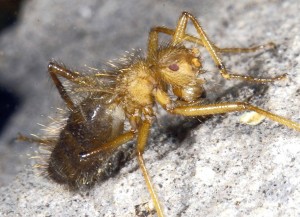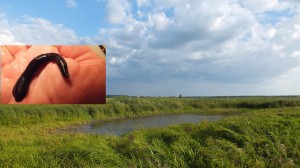 Like an X on a pirate’s treasure map, Robert Copeland uses bat urine stained rock faces in Kenya’s dry-country hills to locate a treasure of a different kind. The Terrible hairy fly (Mormotomyia hirsuta Austen), once described as the world’s most rare fly, was last seen in 1948. It piqued the interest of Robert Copeland from the International Centre of Insect Physiology and Ecology in Kenya. Read more…
Like an X on a pirate’s treasure map, Robert Copeland uses bat urine stained rock faces in Kenya’s dry-country hills to locate a treasure of a different kind. The Terrible hairy fly (Mormotomyia hirsuta Austen), once described as the world’s most rare fly, was last seen in 1948. It piqued the interest of Robert Copeland from the International Centre of Insect Physiology and Ecology in Kenya. Read more…
Month: January 2014
Bat urine indicator aids search for Terrible hairy fly
First wild capture fisheries project in Laos’ Mekong River basin reports results
The Julien’s golden carp (Probarbus jullieni) project sought to conserve rare fish in the Mekong Basin by developing standardized methods for monitoring population trends and by enhancing the capacity of local people to engage in conservation research and sustainable fisheries management. This project represents the first wild capture fisheries research project to take place in this area.
During the 3-month study at least 62 different species were recorded in fishermen’s catch. The researcher report several outcomes including : (1) Collecting important baseline data on juvenile and mature adult Julien’s golden carp (Probarbus jullieni), and other fish species; (2) Raising awareness about the need for fish conservation Increased local capacity for fish-catch monitoring, (3) establishing local commitment from fishermen to continue fish conservation and management work. Read more…
Leech in Ukraine
The Fadejew leech (Fadejewobdella quinqueannulata) is a big-bodied (14 cm long) charismatic invertebrate that is endemic to a local area in eastern Ukraine and adjacent territories of Russia. Dr Serge Utevsky from V. N. Karazin Kharkiv National University in Ukraine received a grant from the Fund to study the leech. Read more…



